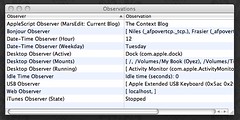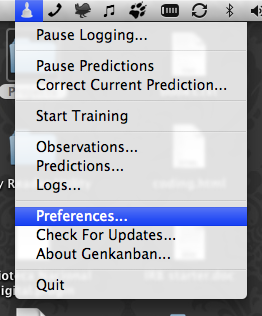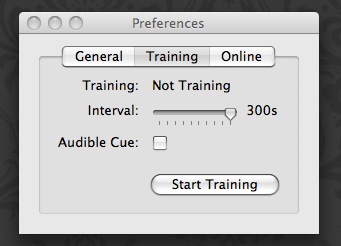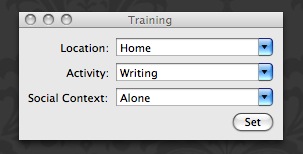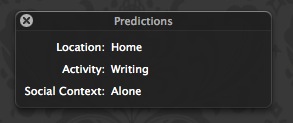Pennyworth 1.0b5 is now available for download.
This is the first release of Pennyworth, the application formerly known as Genkanban. To migrate your settings from Genkanban to Pennyworth, copy or rename the following files and folders, replacing “Genkanban” with “Pennyworth”:
~/Library/Appplication Support/Genkanban
~/Libary/Preferences/net.aetherial.context.Genkanban.plist
Instead of the normal bzip’ed tarball, the link above will fetch a compressed disk image. In light of the new AppleScript functionality, a variety of sensors have been removed from the main application and replaced with straight AppleScript files. These files are named with the “Observer” prefix in the disk image and should be copied to
~/Library/Appplication Support/Pennyworth/AppleScript/Sensors
Also included is a sample action script for Adium that will update your Adium status message with your current activity (Adium.scpt). Copy this file to the folder
~/Library/Appplication Support/Pennyworth/AppleScript
In addition to the renaming and AppleScript changes, this release also includes a number of bug fixes that should address performance problems and UI glitches. I want to thank David Symonds (creator of MarcoPolo) for some performance tips and Ricky Buchanan (of ATMac) for feature suggestions and AppleScript consulting.
Prerequisites
MacOS X 10.5 “Leopard”
Growl (Recommended): Pennyworth can be used without the Growl notification system by viewing the current predictions, but this occupies precious screen real estate and you attention. In order to receive visual notifications of updated predictions, I recommend that you install and configure the Growl notification system before running Pennyworth.
Source
There is not a source distribution available yet, but if you’d like the source code, it is available via Subversion at
http://context-macosx.googlecode.com/svn/trunk/Tools/Applications/Pennyworth/
The source requires Xcode 3 to build.
Bugs, suggestions, or comments?
Please post any feedback in the comments below or send it to context@aetherial.net. This is early release software, so there will be bugs, and the application will only improve when problems are identified and submitted.


